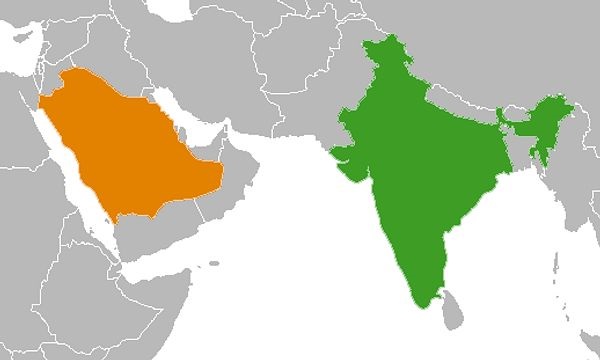Research paper on the concept of Green Marketing
Abdulla.AM
Assistant professor, Department of Commerce, Najath College of Science and Technology, Karuvarakundu
The concept of green marketing is still in the stage of infancy. Even till date has not been included as a subject in identifying the key ideas in relation to the awareness of green products that may be not relevant to eco-friendly environment. This paper will attempt to identify the extent to which consumers are concerned to purchase green products, to study the various factors which affect consumers purchasing green products to analyze the demographics of consumers inclined to purchase green products and to evaluate perception of consumers.
Introduction
In recent years the term green or eco marketing have come to prominence, and reflect a growing concern at all levels of the impact of the increased consumption on physical environment. The implications of the destruction of the forests , the appearance of ‘ holes ‘ in the ozone layer etc. were widely published and created a wave concern about the destruction of our natural environment. Therefore, many consumers are in favor of eco-friendly products .This has created some impact on marketing.
Many people believe that green marketing refers solely to the promotion or advertising of products with environmental characteristics. Generally terms like Phosphate-Free, Recyclable, Refillable, Ozone Friendly, and Environmentally Friendly are some of the things consumers most often associate with green marketing. In general green marketing is a much broader concept, one that can be applied to consumer goods, industrial goods and even services.
Concept of green marketing concerns with protection of ecological environment. Modern marketing has created a lot of problems. Growth in marketing activities resulted into rapid economic growth, mass production with the use of advanced technology, comfortable and luxurious life, style, severe competition, use of unhealthy marketing tactics and techniques to attract customers, exaggeration in advertising, liberalization and globalization.
Definition of Green Marketing
The concept of green marketing was developed in the late 1980s and early 1990s. Yet defining green marketing is not a simple task. Indeed the terminology used in this area has varied, it includes: Green Marketing, Environmental Marketing and Ecological Marketing.
Green or Environmental Marketing consists of all activities designed to generate and facilitate any exchanges intended to satisfy human needs or wants, such that the satisfaction of these needs and wants occurs, with minimal detrimental impact on the natural environment.
Green marketing is defined as "Green or Environmental Marketing consists of all activities designed to generate and facilitate any exchanges intended to satisfy human needs or wants, such that the satisfaction of these needs and wants occurs, with minimal detrimental impact on the natural environment."
According to American Marketing Associations, green marketing is the marketing of products that are presumed to be environmentally safe. Green marketing incorporates a broad range of activities, including product modification, changes to the production process, packaging changes, as well as modifying advertising.
Examples of Green Marketing in India
1. Digital Tickets by Indian Railways.
2. No Polythene carry-bags for free.
3. Green IT Project: State Bank of India.
4. Lead free paints from Kansai Nerolac.
5. Wipro’s Green Machines.
Green marketing products and its characteristics:-
The products those are manufactured through green technology and that caused no environmental hazards are called green products. We can define green products by following measures:-
1. Products those are originally grown.
2. Products those are recyclable, reusable and biodegradable.
3. Products with natural ingredients.
4. Products containing recycled contents, non-toxic chemical.
5. Products that do not harm or pollute the environment.
6. Products those have eco- friendly packaging i.e. reusable, refillable containers etc.
Need for green marketing
As resources are limited and human wants are unlimited, it is important for the marketers to utilize the resources efficiently without waste as well as to achieve the organizational goal. So green marketing is inevitable.
There is growing interest among the customers all over the world regarding protection of environment. Worldwide evidence indicates people are concerned about the environment and are changing their behavior. As a result of this, green marketing has emerged which speak for growing market for sustainable and socially responsible products and services.
Why are firms using green marketing?
When looking through the literature there are several suggested reasons for firms’ increased use of Green Marketing. Five possible reasons are as follows:
1. Organizations perceive environmental marketing to be an opportunity that can be used to achieve its objectives.
2. Organizations believe they have a moral obligation to be more socially responsible.
3. Governmental bodies are forcing firms to become more responsible.
4. Competitors' environmental activities pressure firms to change their environmental marketing activities.
5. Cost factors associated with waste disposal, or reductions in material usage forces firms to modify their behavior.
Objectives of green marketing
• To identify the customers to fulfill their need.
• To create awareness about the ecological process and environmental, sustainable, green marketing process.
• To educate the customers.
• To avoid the wastage of resources.
• To utilize maximum resources in an effective manner- a cycle process.
• To tell the truth and generating hype regarding a brand.
Benefits of green marketing
Green marketing offers a number of significant benefits:
Marketers get access to new markets and gain an advantage over competitors that are not advocating “greenness.”
• Marketers can charge a premium on products that are seen as more eco-responsible.
Organizations that adopt green marketing are perceived to be more socially responsible.
Green marketing builds brand equity and wins brand loyalty among customers
It ensures sustained long-term growth along with profitability.
It saves money in the long run, thought initially the cost is more.
It helps companies market their products and services keeping the environment aspects in mind.
It helps in accessing the new markets.
•Most of the employees also feel proud and responsible to be working for an environmentally responsible company.
Problems with green marketing
• The environmentally responsible action of today may be harmful in the future.
• There is difficulty in establishing policies that will address all environmental issues.
• Reacting to competitive pressure can cause all to make the same mistake as the leader.
• To reduce cost or increased profit may not force firms to address the important issues of environmental degradation.
• Consumers perceptions are not always correct. Most customers choose to satisfy their personal needs before caring for the environment.
• Overemphasizing greenness rather than customer needs can prove devastating for a product.
• Many customers keep away from products labeled “green” because they see such labeling as a marketing gimmick, and they may lose trust in an organization that suddenly claims to be green.
Challenges Ahead
• Green products require renewable and recyclable material, which is costly.
• Requires a technology, which requires huge investment in R & D.
• Water treatment technology, which is too costly.
• Majority of the people are not aware of green products and their uses.
• Majority of the consumers are not willing to pay a premium for green products.
Three keys to successful green marketing
Show potential customers that you follow green business practices and you could reap more green on your bottom line. Green Marketing isn't just a catchphrase; it's a marketing strategy that can help you get more customers and make more money. But only if you do it right.
For green marketing to be effective, you have to do three things; • Being genuine.
• Know your customers
• Giving your customers an opportunity to participate.
MARKETING MIX OF GREEN MARKETING
When companies come up with new innovations like eco- friendly products, they can access new markets, enhance their market shares, and increase profits. Just as we have 4Ps product, prices, place and promotion in marketing, we have 4ps in green marketing too, but they are a bit different. They are buttressed by three additional Ps, namely people, planet and profits.
A model green Marketing mix contains four "P's":
• Product: A producer should offer ecological products which not only must not contaminate the environment but should protect it and even liquidate existing environmental damages.
• Price: Prices for such products may be a little higher than conventional alternatives. But target groups like for example LOHAS are willing to pay extra for green products.
• Place: A distribution logistics is of crucial importance; main focus is on ecological packaging. Marketing local and seasonal products like vegetables from regional farms is easier to be marketed “green” than products imported.
• Promotion: A communication with the market should put stress on environmental aspects, for example that the company possesses a CP certificate or is ISO 14000 certified. This may be publicized to improve a firm’s image. Furthermore, the fact that a company spends expenditures on environmental protection should be advertised. Third, sponsoring the natural environment is also very important. And last but not least, ecological products will probably require special sales promotions.
Additional social marketing "P's" that are used in this process are:
• Publics: Effective Social Marketing knows its audience, and can appeal to multiple groups of people. "Public" is the external and internal groups involved in the program. External publics include the target audience, secondary audiences, policymakers, and gatekeepers, while the internal publics are those who are involved in some way with either approval or implementation of the program.
• Partnership: Most social change issues, including "green" initiatives, are too complex for one person or group to handle. Associating with other groups and initiatives to team up strengthens the chance of efficacy.
• Policy: Social marketing programs can do well in motivating individual behavior change, but that is difficult to sustain unless the environment they're in supports that change for the long run. Often, policy change is needed, and media advocacy programs can be an effective complement to a social marketing program.
• Purse Strings: How much will this strategic effort cost? Who is funding the effort
Conclusion
Green marketing should not neglect the economic aspect of marketing. Marketers need to understand the implications of green marketing. If you think customers are not concerned about environmental issues or will not pay a premium for products that are more eco-responsible, think again. You must find an opportunity to enhance your products performance and strengthen your customer’s loyalty and command and higher price sustainable green marketing therefore requires the marketing mix i.e. compatible with the ecology. This is possible through product and delight system design for environment protection. For this purpose understanding the ecology is crucial. It is important for the market to understand that a proper functioning of the eco-system ensures the existence of life.





